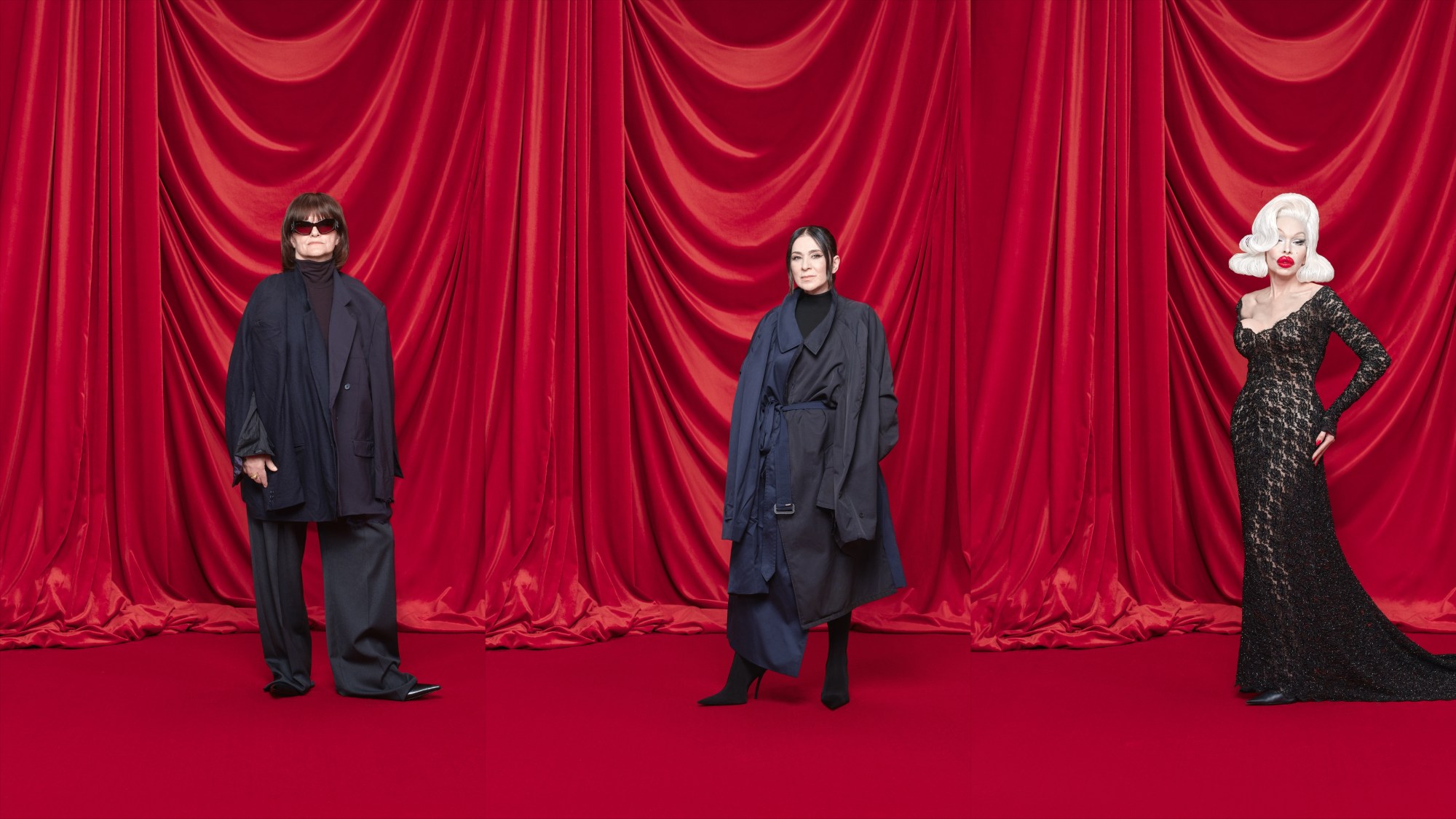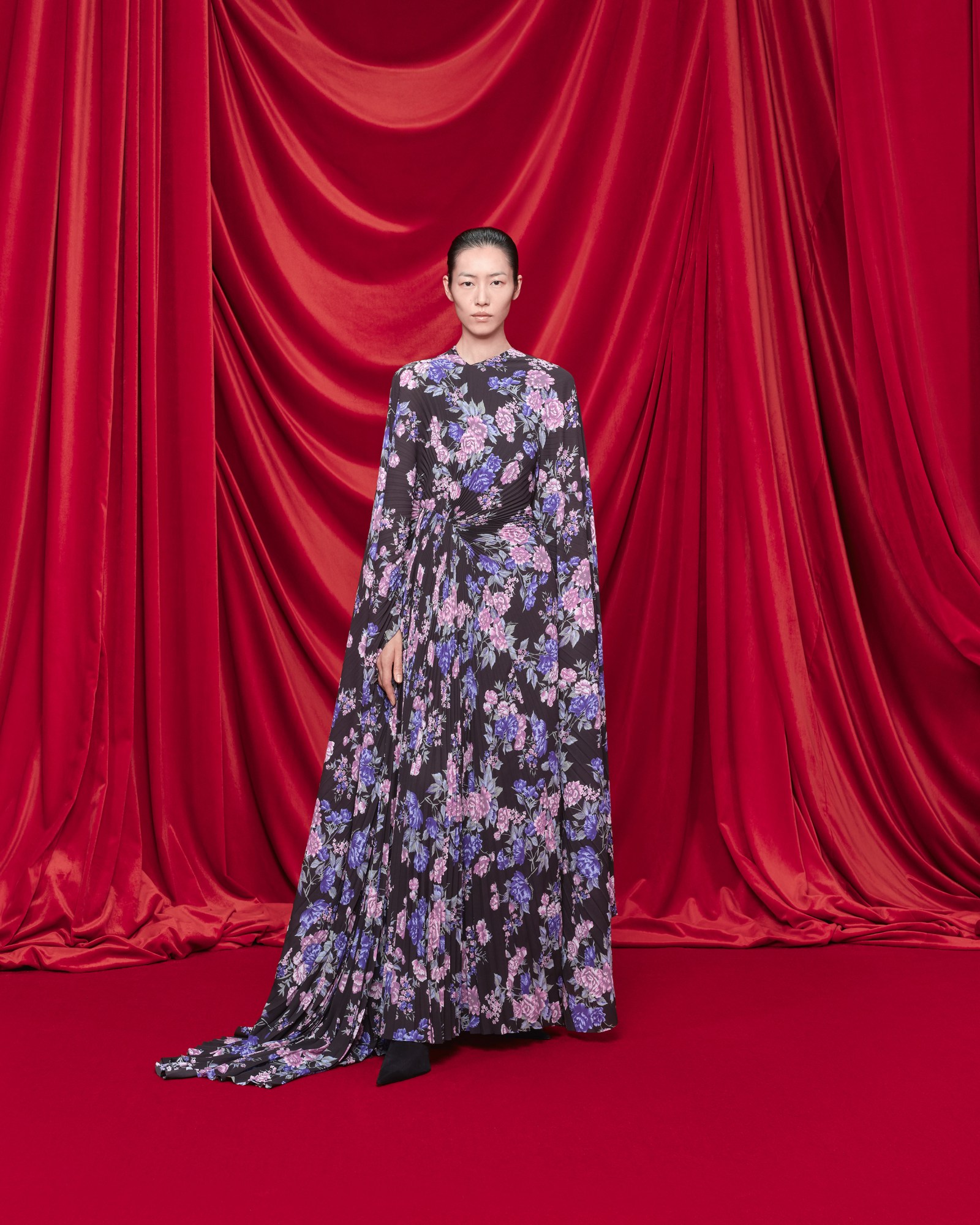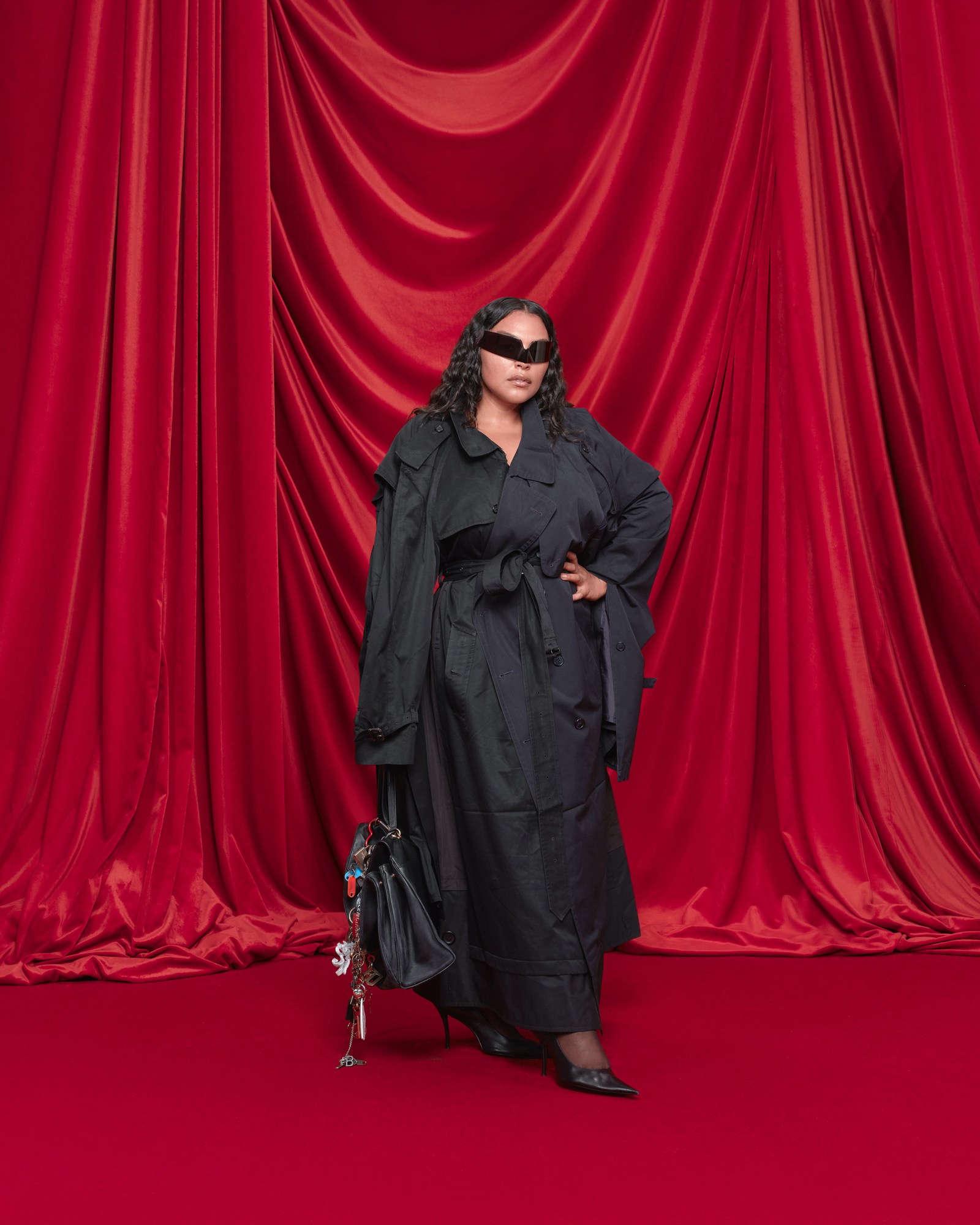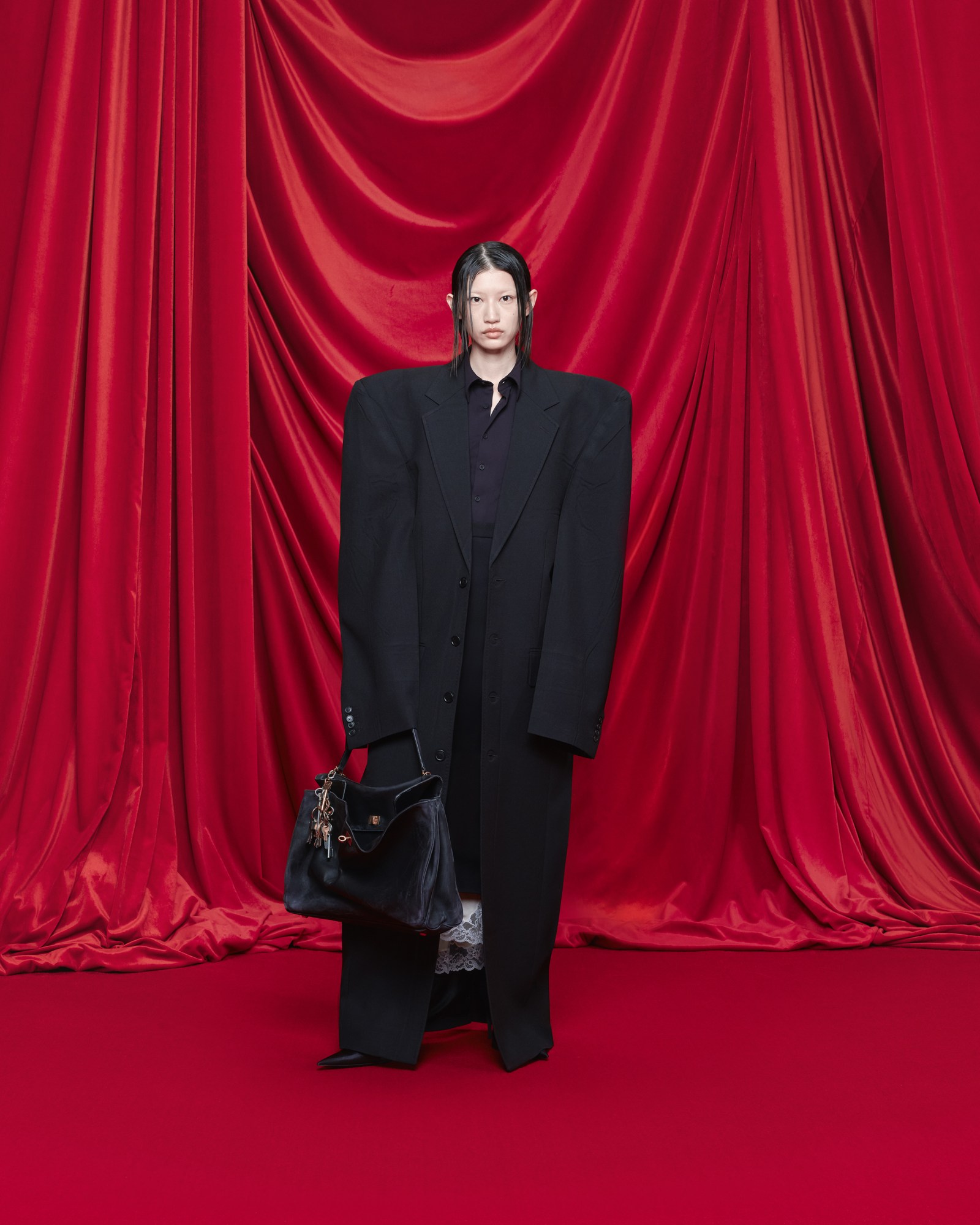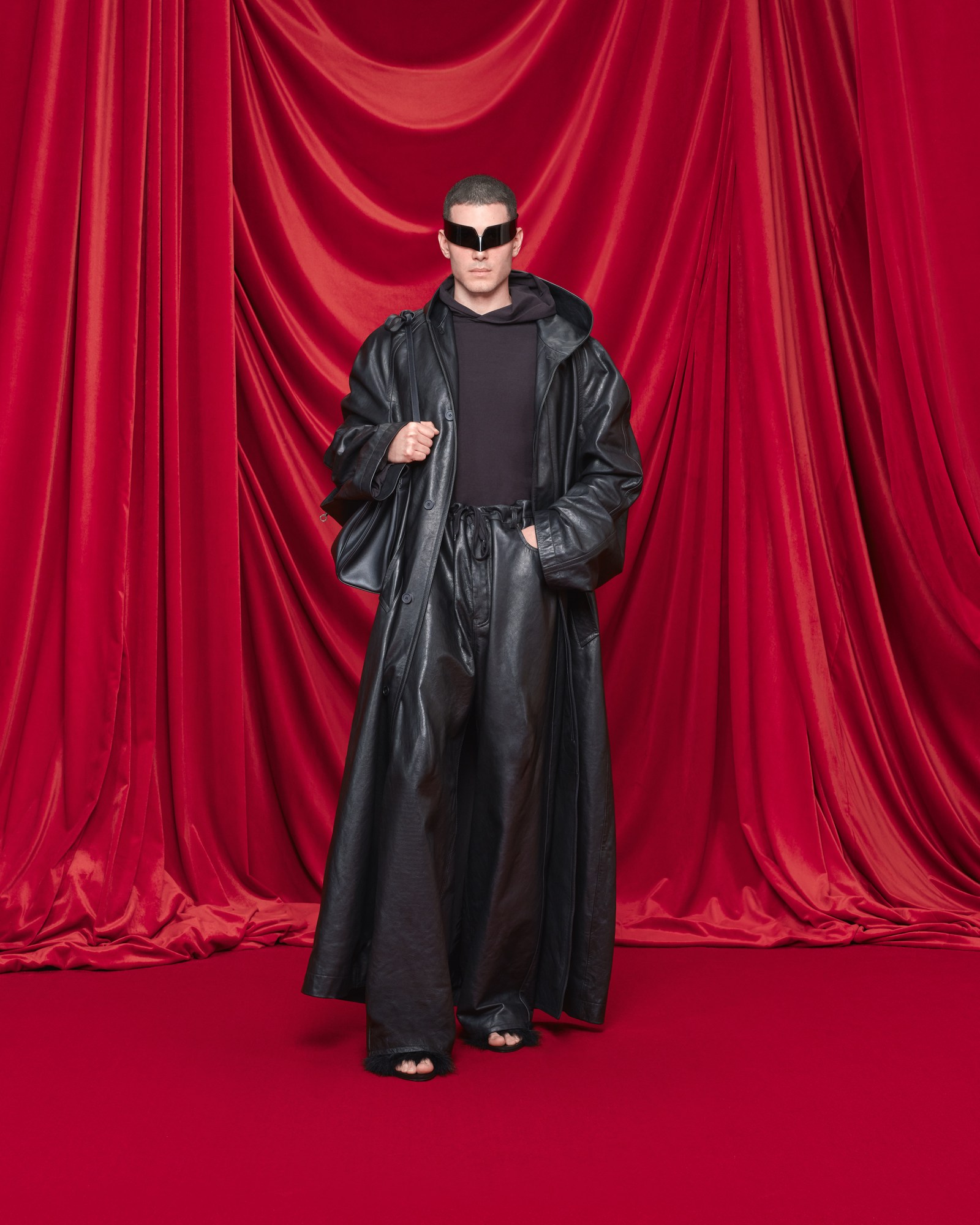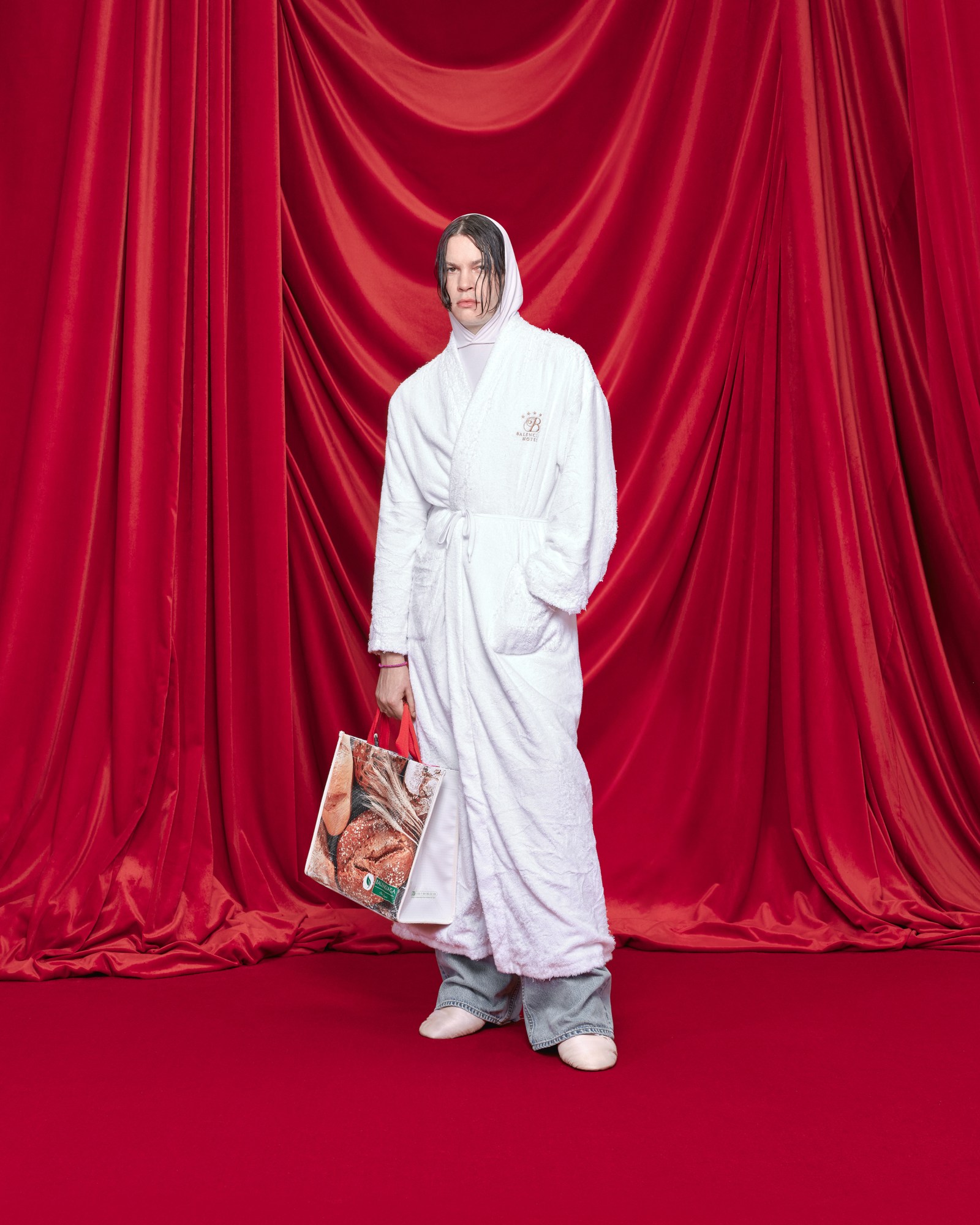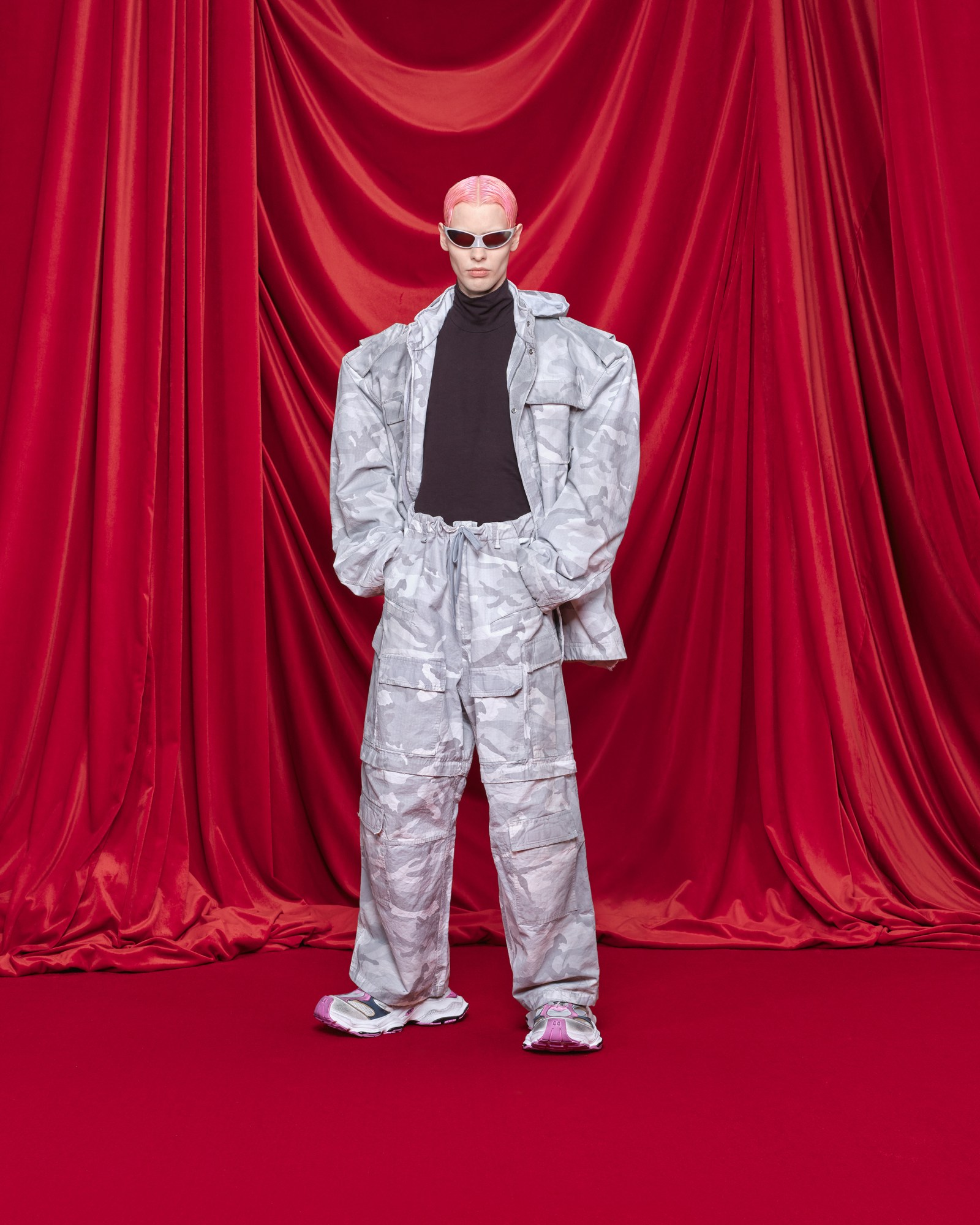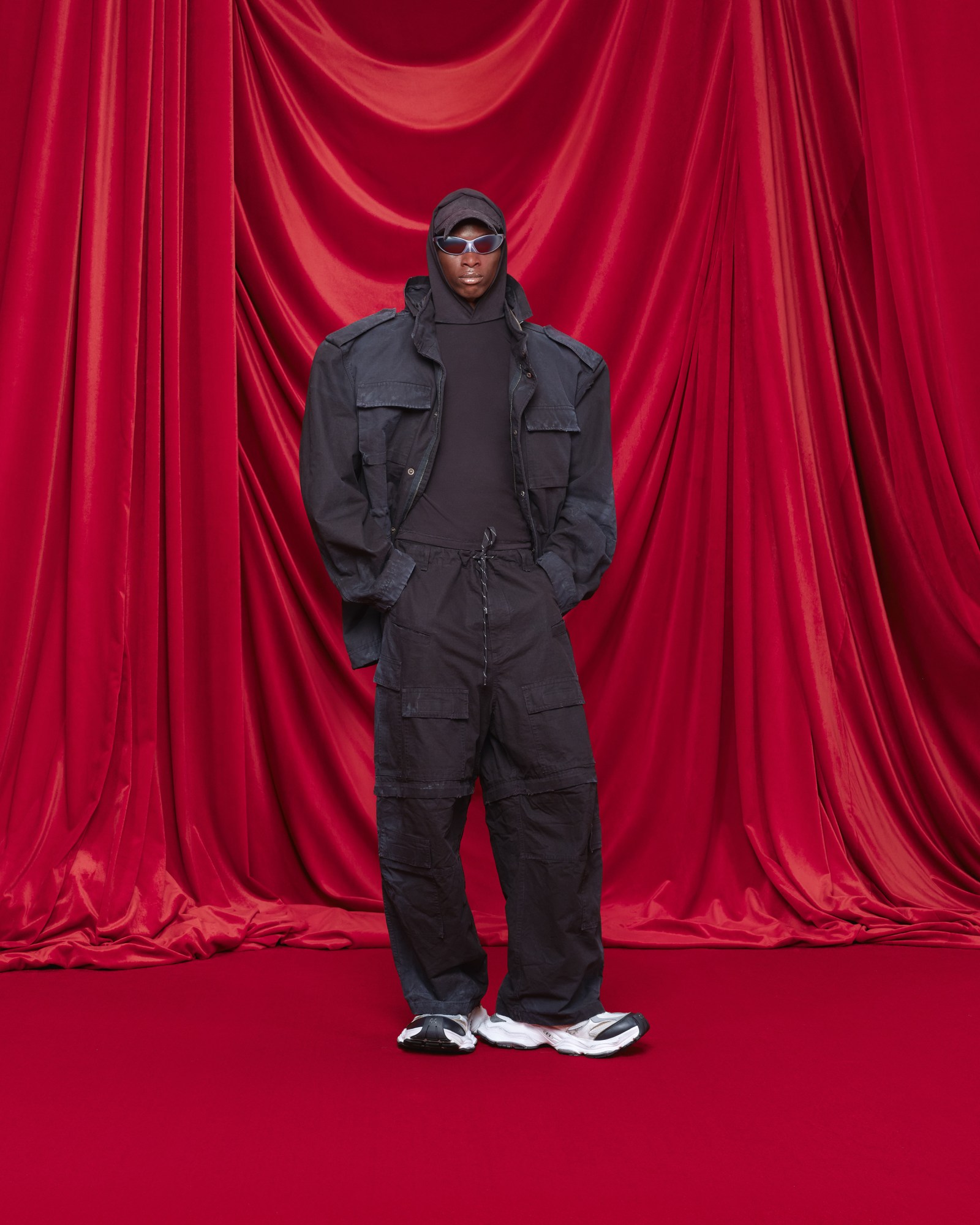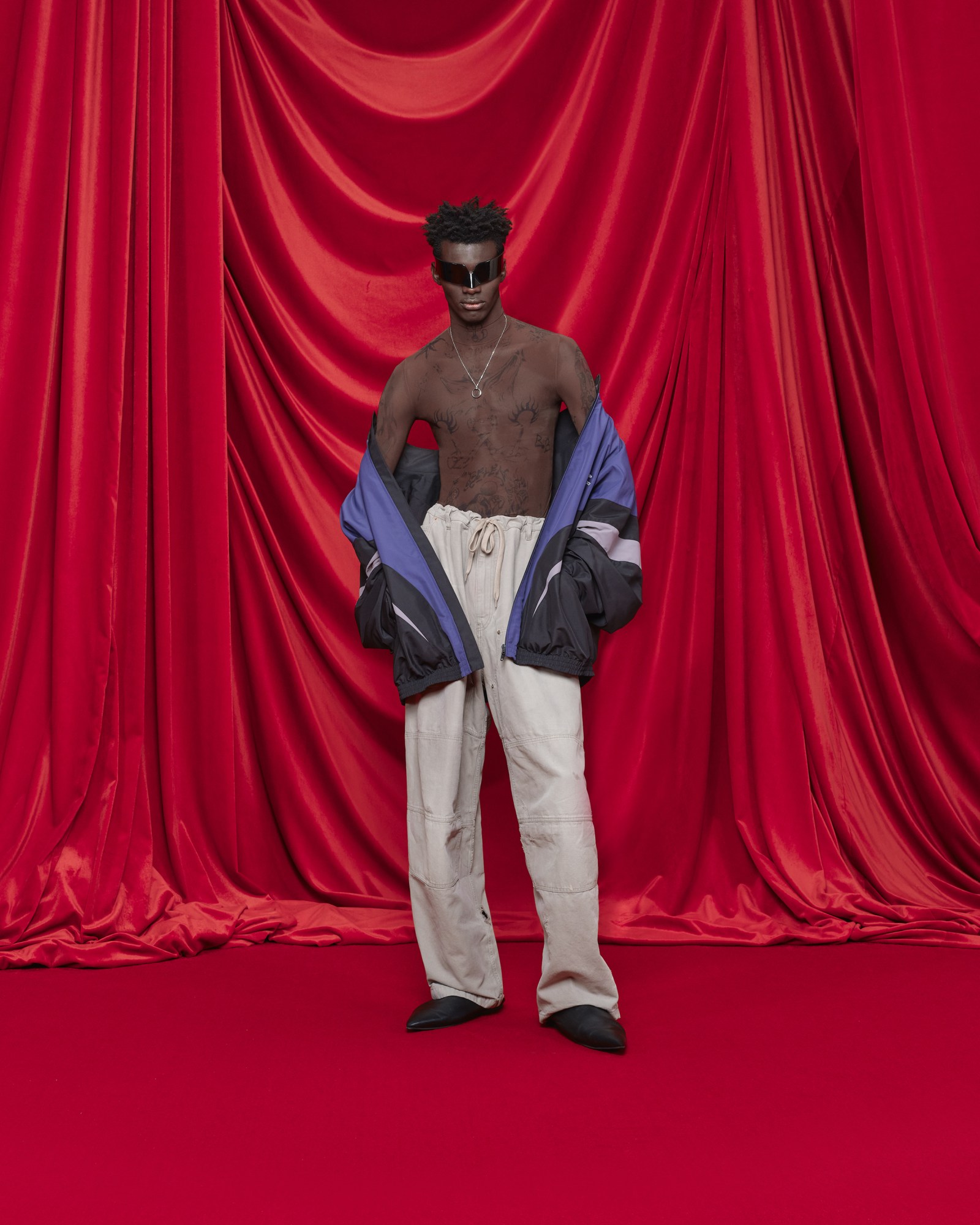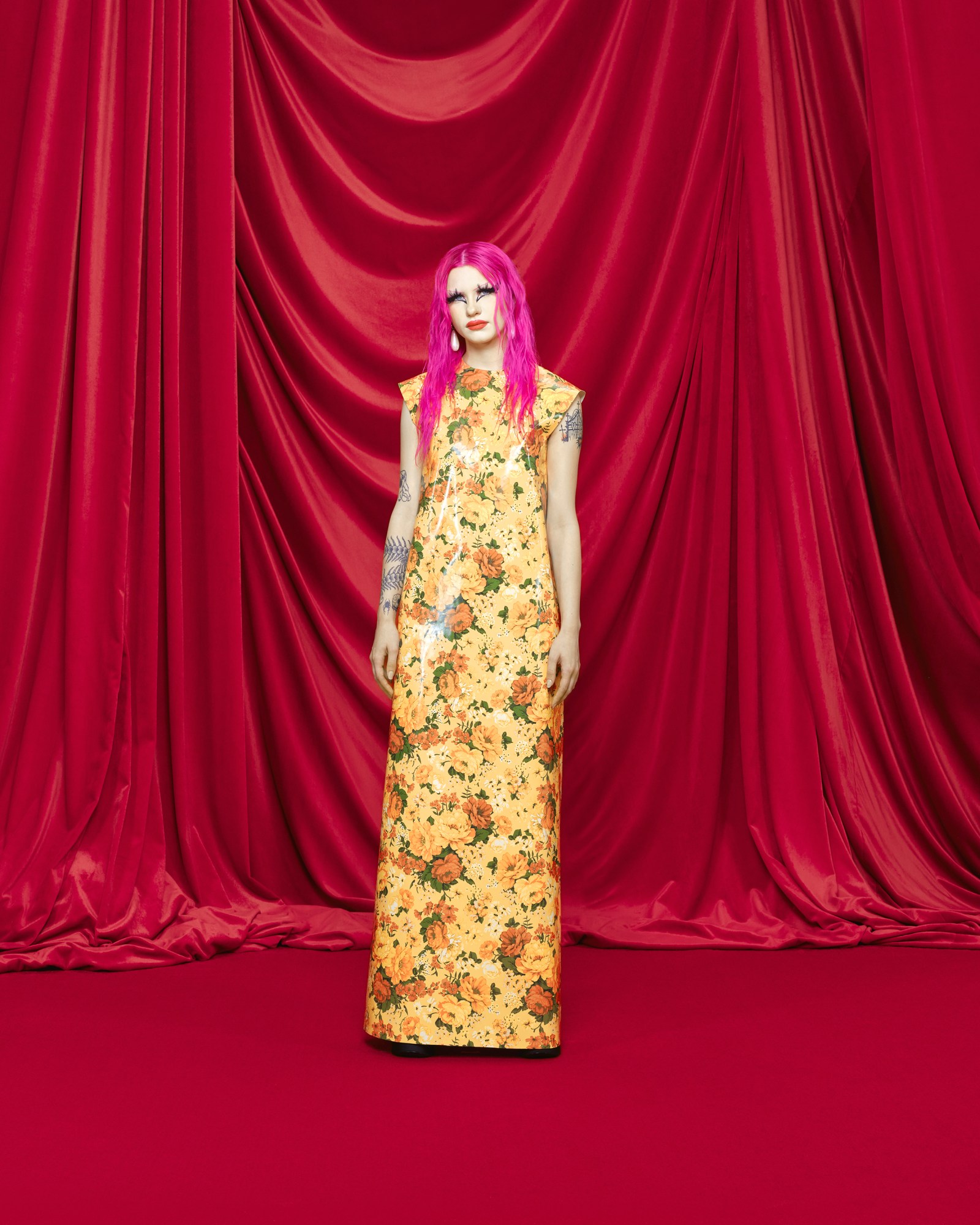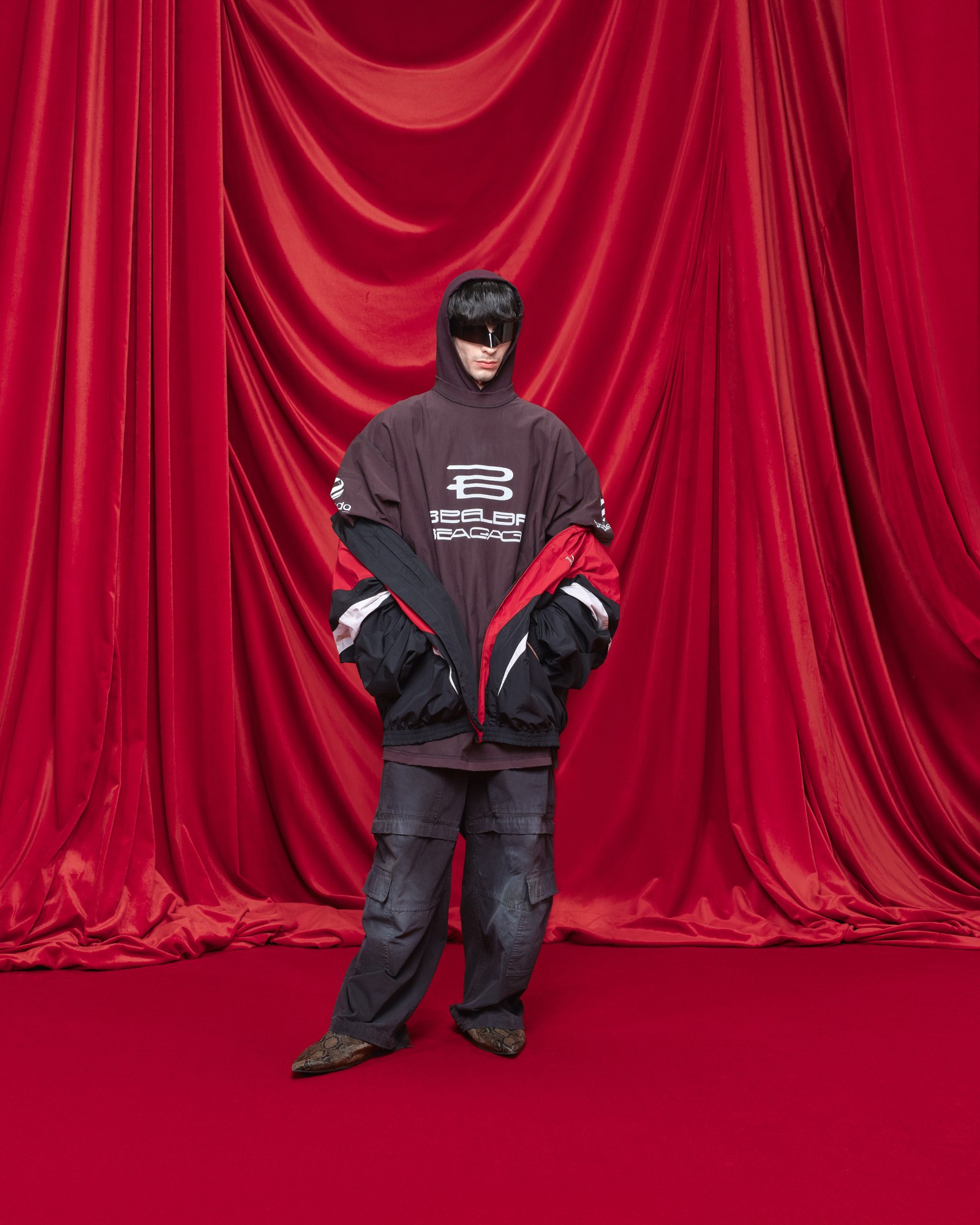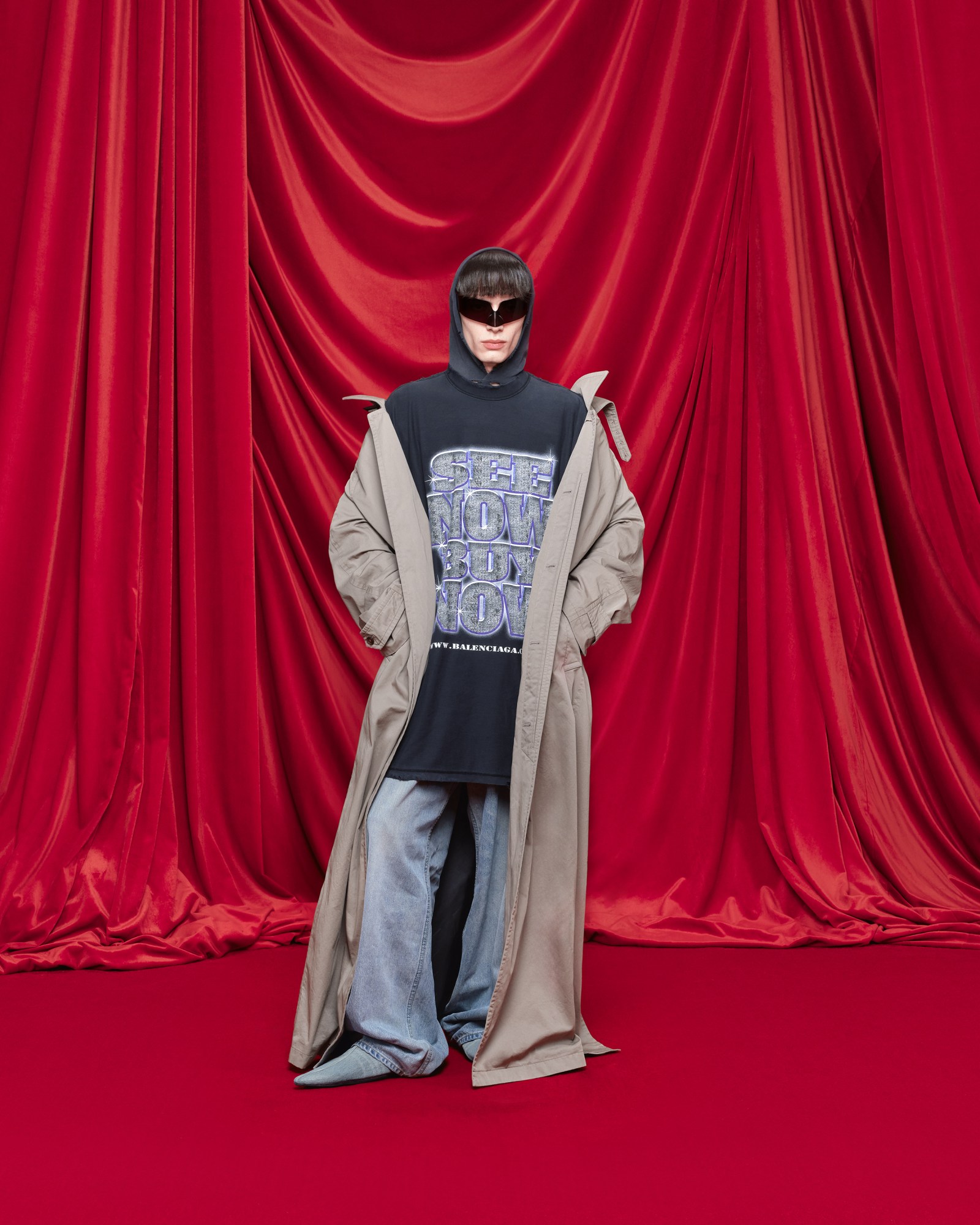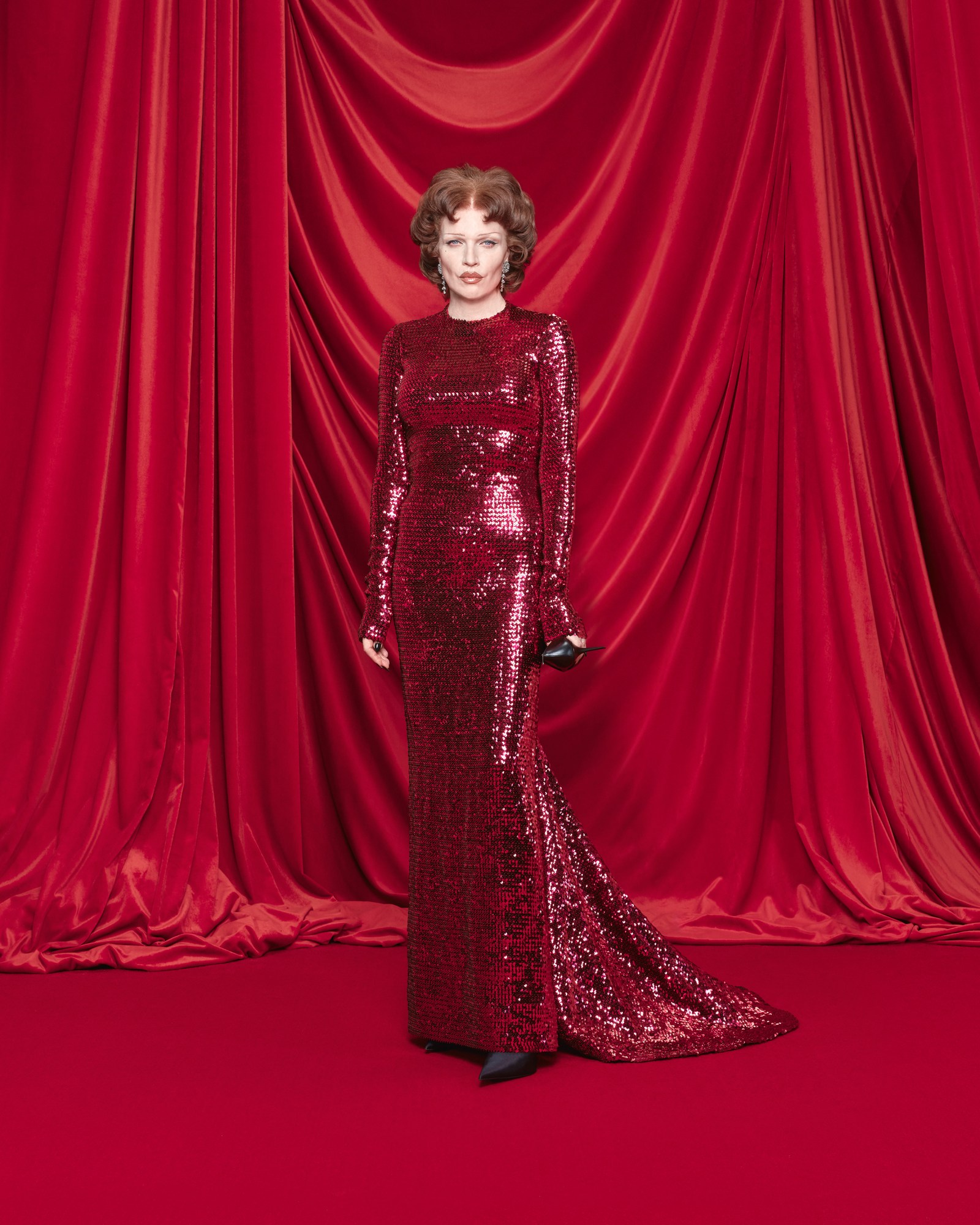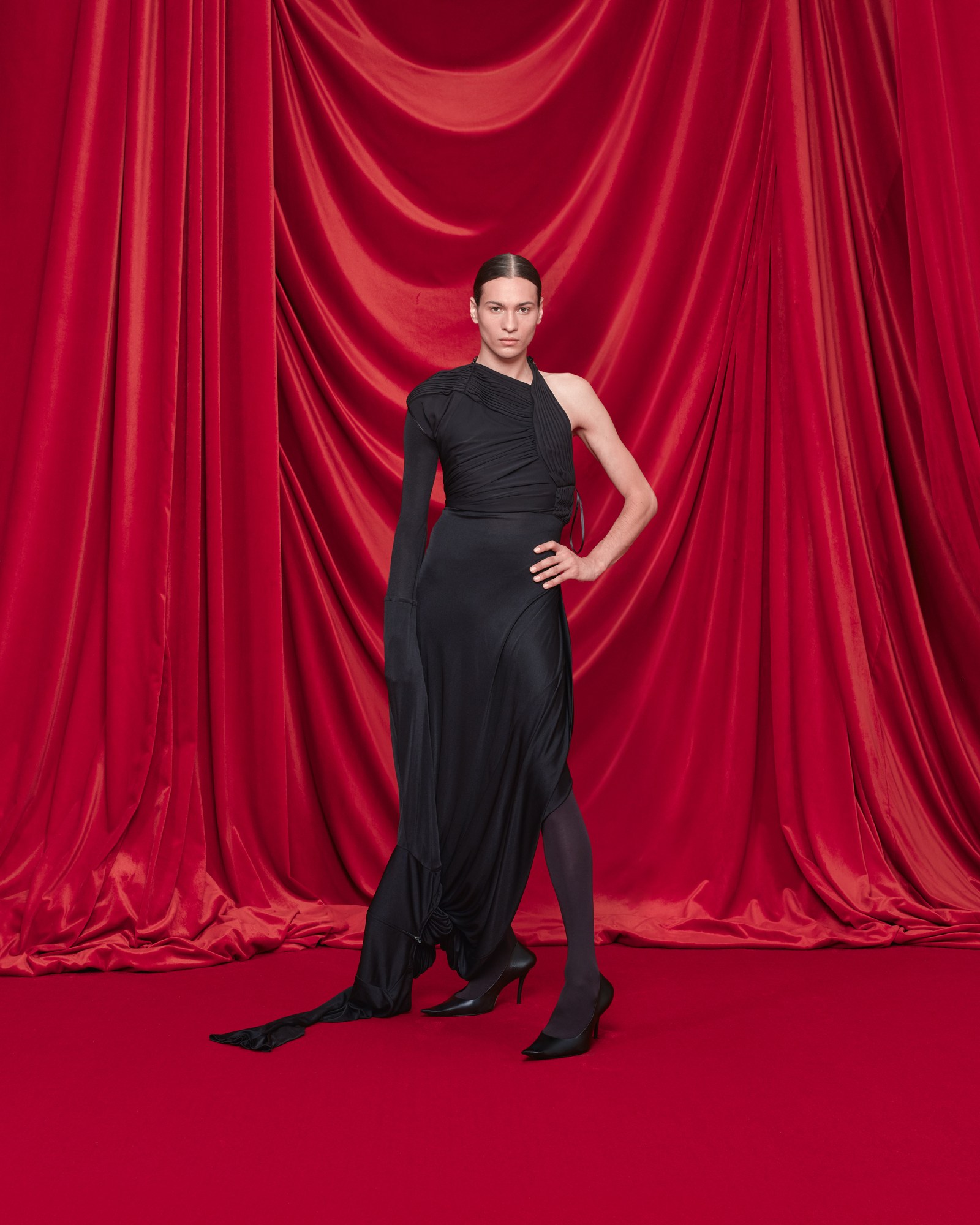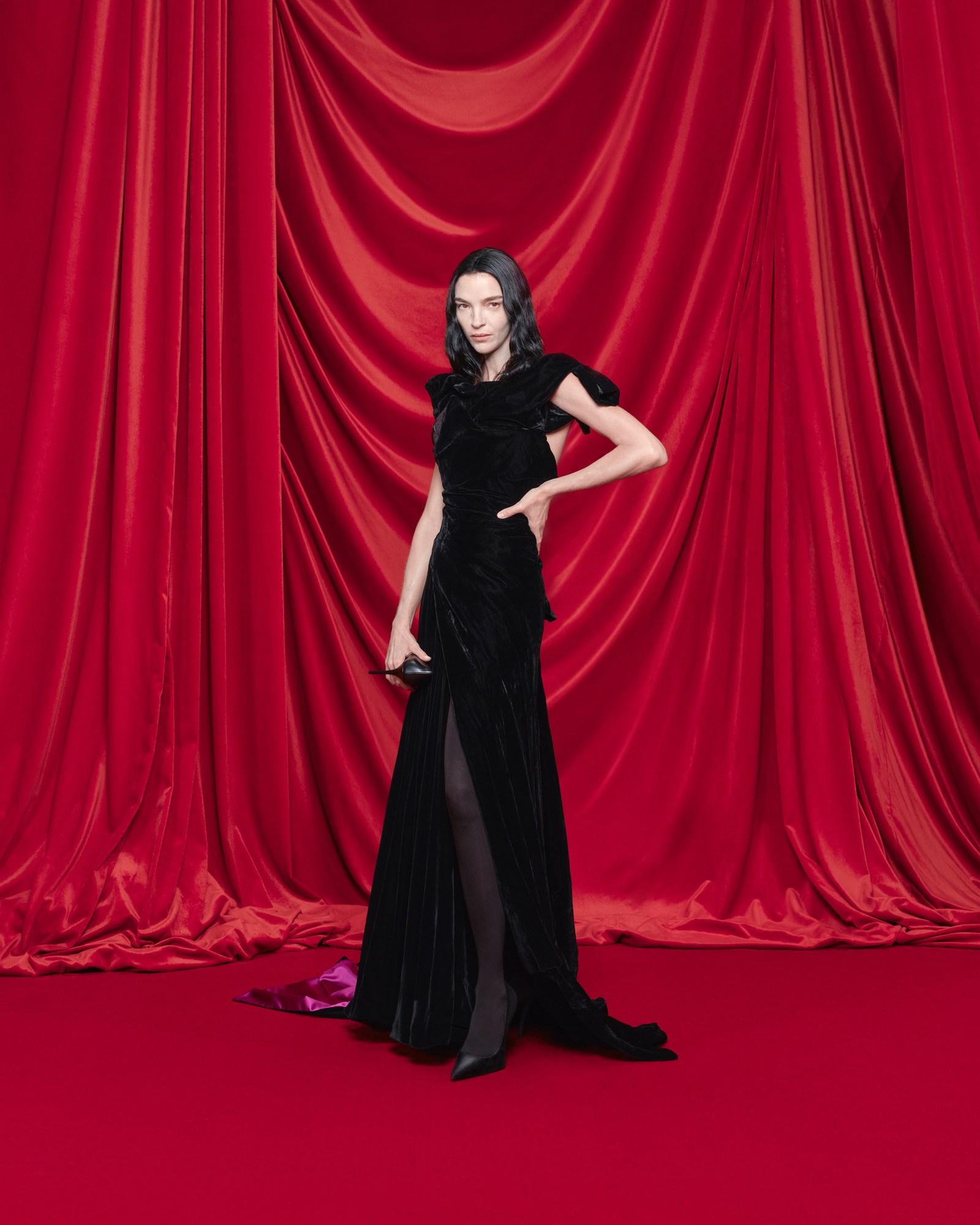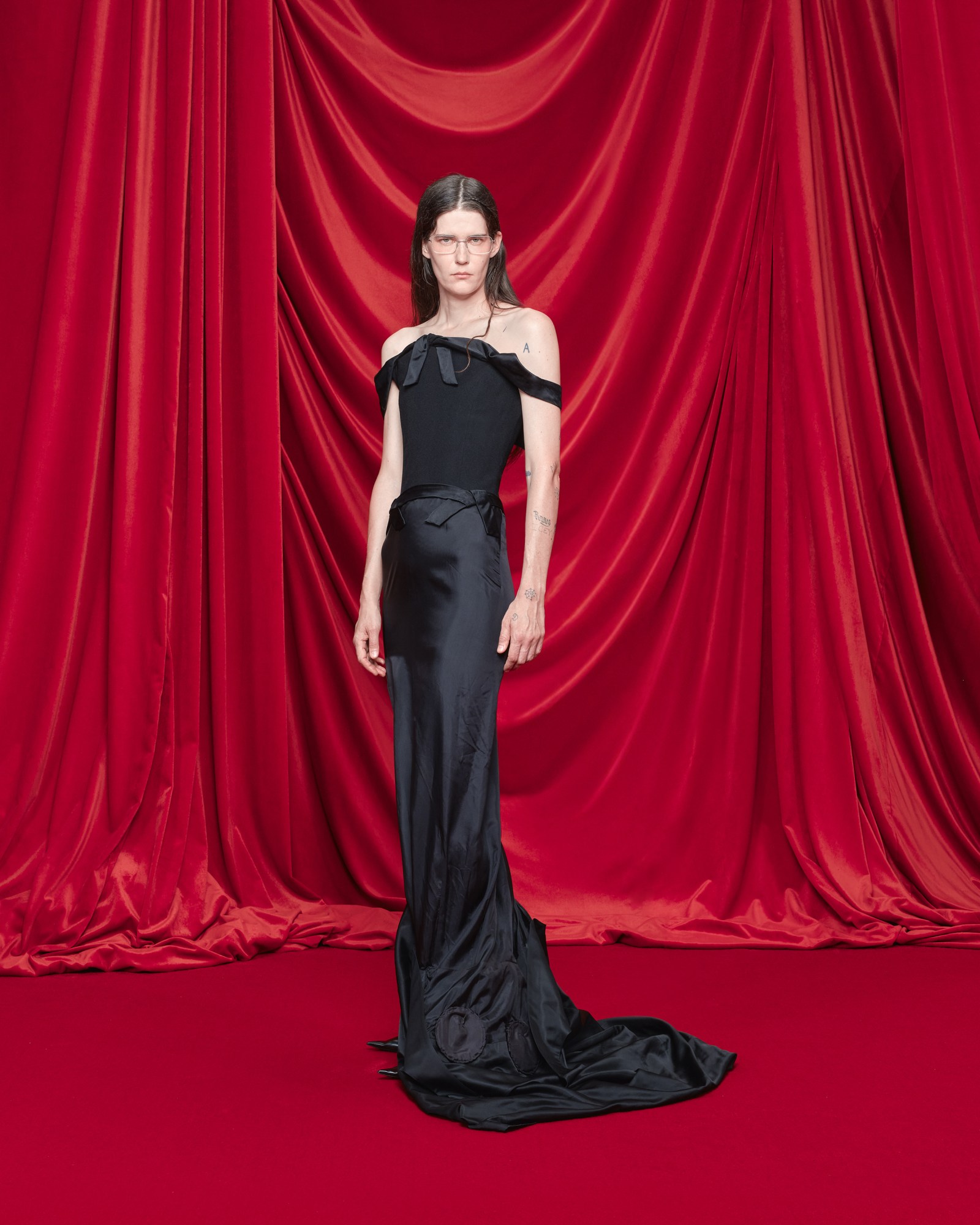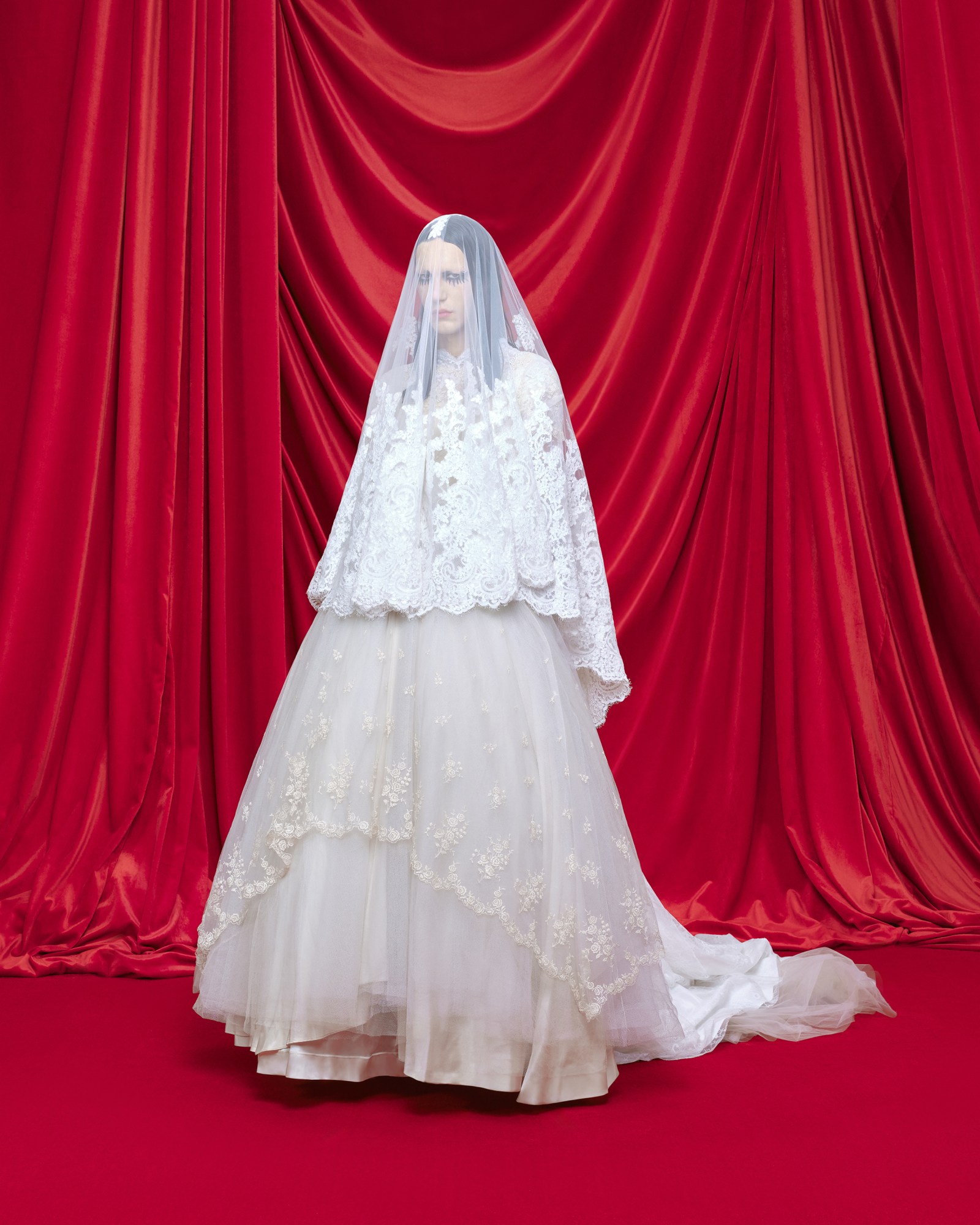“I don’t believe in this kind of perfect, polished beige angora world,” declared a hoodie-cloaked Demna after his SS24 Balenciaga show. “I can’t repress my creativity. I can’t castrate my vision. I just can’t do those things. It’s not me. So this collection is a celebration of everything that I love about fashion.” One thing he wanted to assert is that, for him, fashion is not luxury. “I questioned a lot: ‘What does fashion do for us?’ Because for me, I mean, I must be honest, I don’t care much about luxury or the whole idea of it — because I don’t want to give people a proposition to look like they’re rich or successful or powerful. My fashion works from down up, and not from up down.”
Instead, he wanted to examine the notion of identity: clothes as Gladwellian, thin-slicing ciphers for understanding someone, and how they navigate the world. The heavy red drapes of the show space and velvet theatre seating alluded to the idea that clothes are costumes for the characters we want to be, and the roles that we play in life. Over the summer, he described “a very horrible experience” while on holiday in the South of France, where well-heeled holiday dwellers moved away from Demna and his husband Loïk, with the pair convinced that it was down to the way they looked. And so, the next day, the couple ventured to the local resortwear boutiques and bought chino shorts, linen shirts and loafers to dress up as the local White Lotus crowd. “It was an anthropological project to experience how it is to fit in for once, and how it is to be the kind of Demna that the world can tolerate,” he explained. “It felt disgusting, and it confirmed to me that the only way I want to be and I want my work to be is loyal to myself and no trying to be someone or something else — because I will never fit in.”
His own mother opened the show in a baggy trench, upcycled from vintage navy and black trenches, spliced together with two extra sleeves dangling from the shoulders. His husband, Loïk, closed the show in a wedding dress mantled from seven different antique bridal gowns, tiered and piled together anew. In between, a cast of friends including nightlife legend Amanda Lepore, fashion critic Cathy Horyn, his publicist Robin Meason, as well as various other friends and collaborators, walked the show. For a house the scale of Balenciaga, it says a lot that many of the pieces that opened and closed the show were made from upcycled clothes, one-offs to be sold under a new Balenciaga Atelier label (not to be confused with its haute couture offering). Demna said he’d done a lot of the sewing himself, aiming to find new volumes on a machine of the same basic type he’d used as a student.
It’s been a tough year since his now-infamous Mud show last September, with trials and tribulations along the way. After going back to classic dressmaking last season, it seemed like Demna was ready to have a bit more fun this time around. The silhouettes were by and large what we know from Balenciaga – hulking perpendicular shoulders, baggy silhouettes, big sunglasses and huge leather moto jackets, ultra-tight tracksuits, sweeping floral dresses — but there were touches of irreverence in the slouched Samsonite-like luggage worn as shoulder bags, the fake passports with boarding card to Geneva – his current adopted hometown – dangling from the neck, handheld shoes that were actually clutches, leather versions of supermarket ‘Bags For Life’ worn with terrycloth hotel robes with full coat linings.
The show was soundtracked by Isabelle Huppert reading out the instructions for tailoring a jacket, La Veste Tailleur Homme, from a manual, which was also re-editioned as the show’s invitation. Set against orchestral music and heavy electronica, her pace sped up to the point of hysteria as the show progressed, illustrating the intensity that comes with trying to make the perfect piece of tailoring, an infuriating labour of love. “It took an hour just to record it,” Demna explained. “I don’t know how many jackets were in the show, and I guess every show we saw this week had also jackets, and I wanted to show that fashion is a complex job, and I wanted to show that appreciation and also to value that. I didn’t want her to be angry. I wanted to show how intense this process is — it’s not just marketing and business strategies. It’s about creativity and craft.”
But at Balenciaga, just as fashion is not equated to luxury, craft does not mean glossy surfaces and perfectly symmetrical stitching. This was a collection that felt a bit more rebelliously makeshift and DIY, a departure from slick renditions of Demna’s signatures as paragons of dressmaking, something he reverted to amidst all the scandal that ensued last year. “I look back at it, and I really hated it,” he declared about AW23. “It’s a good show, but it’s very polished. In many ways, it was a show of fear. I don’t like it when it’s polished. I like it when it’s rough. That is my aesthetic, and I must stay loyal to that. What I showed today was probably my most personal and my most favourite collection, because it was about me; it was about my story.”
